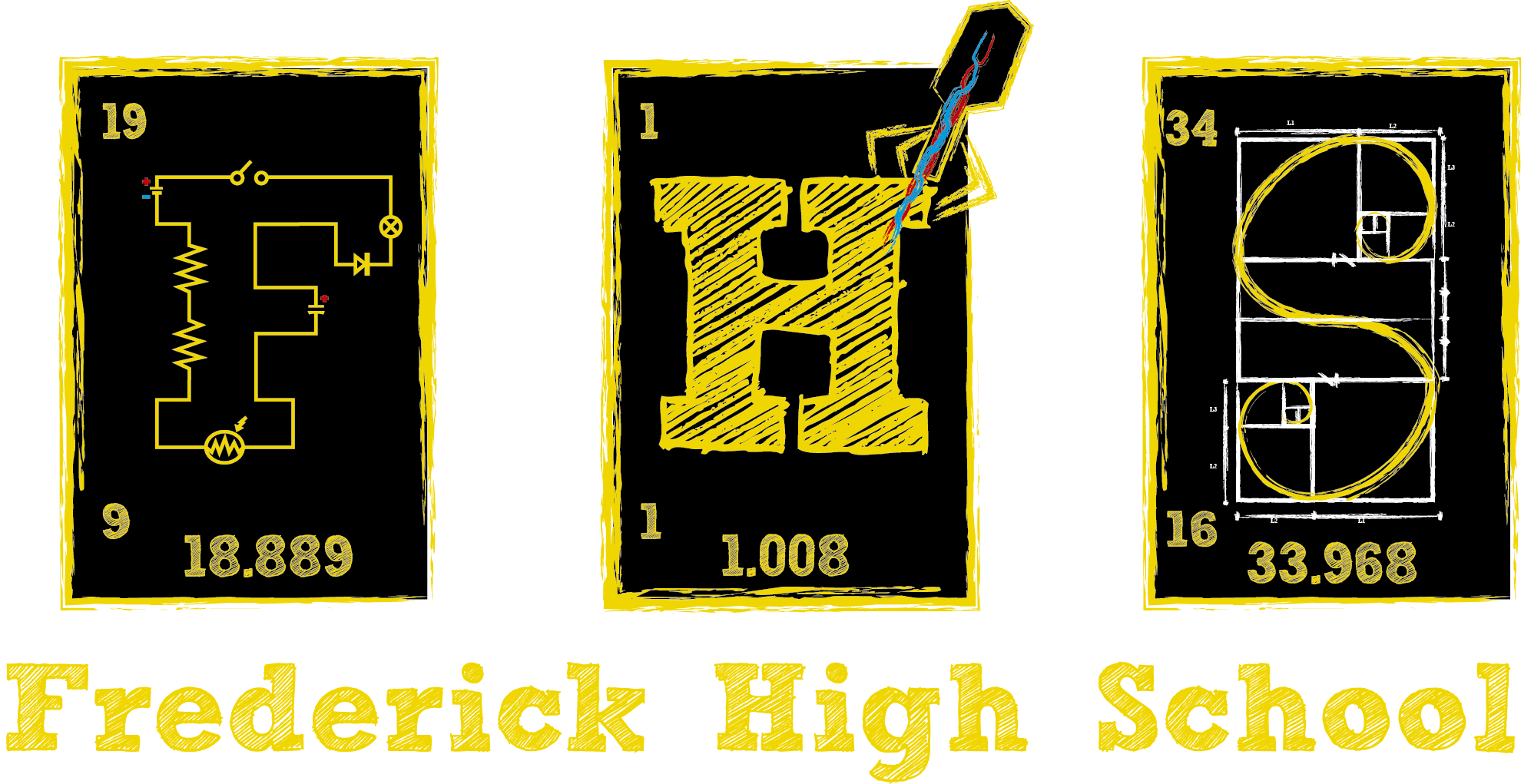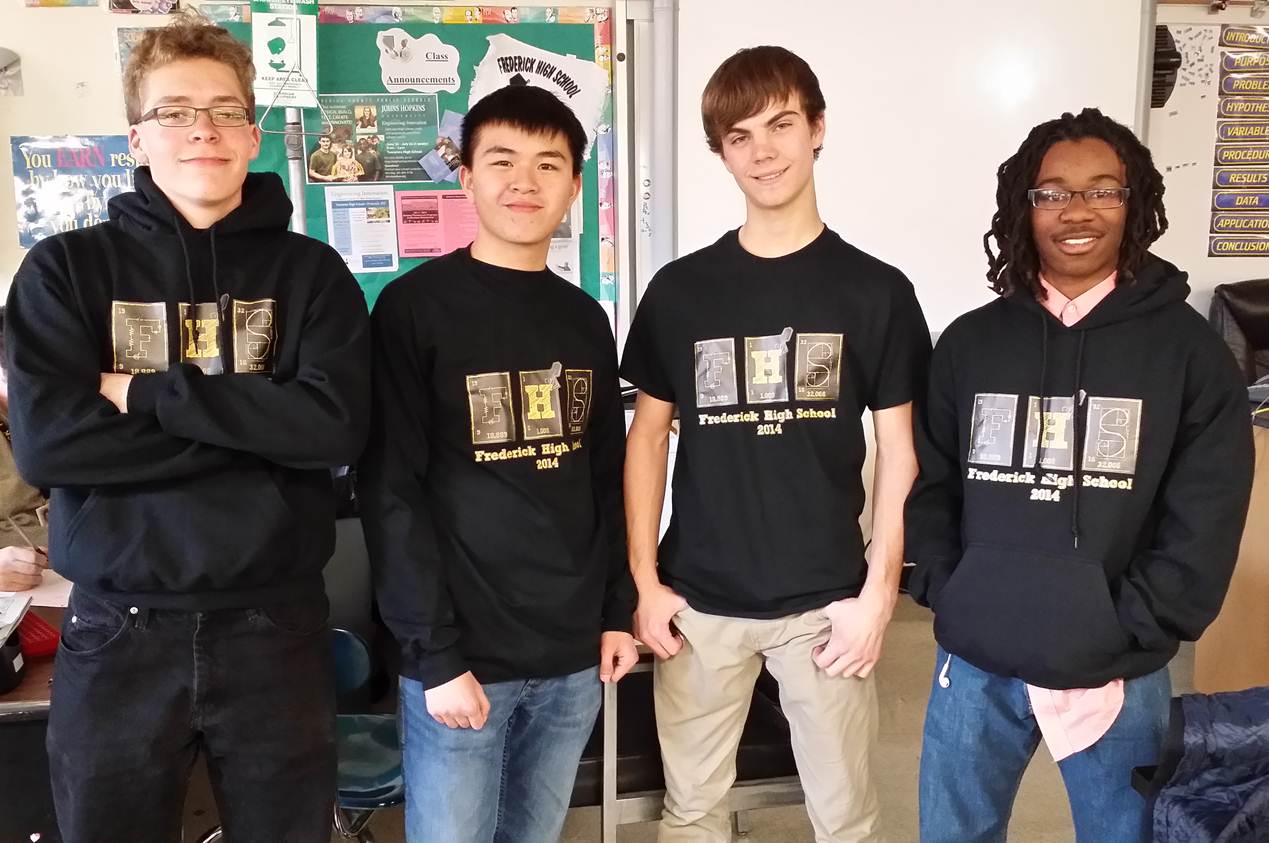Team:FHS Frederick MD
From 2014hs.igem.org
Team
We are interested in creating a microbial fuel cell that utilizes anaerobic bacteria to produce electricity. In order to optimize the growth conditions in the fuel cell, a fluorescent protein marker will be added so to visualize bacterial growth. We plan to implement an oxygen-sensitive promoter to induce expression of the glowing gene. This should ensure that bacteria only grow under anaerobic conditions. This would lead to the creation of a genetic construct that can be deposited back into the “toolbox” parts repository for iGEM.
Goals
Gene Design
(Kyle and Jonathon, briefly summarize how NirB and LOV work together.)
LOV Domain
(Jonathon, this is your area to describe how we engineered the LOV gene.)
See LOV Domain for a more detailed description of how we constructed the gene.
LOV stands for light oxygen voltage. It is a sensor protein that detects the presence of blue light(365nm). In its wild type form it is used by higher plants, fungi, and bacteria. In higher plants LOV controls phototropism and chloroplasts relocation. In this form it absorbs blue light(365nm) and in the wild state flavin mononuclotides(FMN) link to cysteine. This results in LOV not being able to emit green light(495nm) due to FMN. We choose to modify LOV as are anaerobic environment and growth indicator. We choose love over green fluorescent protiens(GFP) due to the fact that GFPs are completely depend on molecular oxygen to glow. However due to FMN LOV can not release green light(495nm). Thomas Drepper found a solution to this problem Drepper and his fellow researchers realized the effects of FMN and found away to remove it. By eliminating the cysteine amino acid FMN had nothing to bind to. Following Dreppers model we removed the cysteine amino acid from bacillus subtilis.
To create the LOV strand, we initially created cultures of E.coli containing the plasmid pBB1MCS2. We chose this plasmid due to its ability to transform a wide range of bacteria, including our desired host bacterial strain of Schwenella odeneidensis for the LOV gene. We grew it in kanamycin-rich plates to eliminate all possible bacterial colonies lacking pBB1MCS2. Using the Quia prep spin mini prepkit, we extracted the plasmid from the E.coli bacteria. We tested the purity of the uncut plasmid through electrophoresis.
We then grew cultures of Bacillus subtilis that contained the desired LOV domian. Extraction of the genomic DNA from B.subtilis was accomplished through a boil prep procedure.
We then digested LOV and NirB into two separate preps containing the plasmid pB1C3 already treated with EcoRI and PstI,which originated from the iGEM 3A assembly kit.
Ligation of the two digests of NirB and LOV were completed fusing them to the plasmid pB1C3. Using these new plasmids, we then commenced on transformation of the LyoComp cells. However the transformation efficiency was very low.. After two failed transformations, we decided to create our own chemically competent cells,thus created E.coli NE1U beta cells. We then performed another digestion, as well as ligation, with LOV and NirB. We completed another transformation using E.coli NE1U Beta bacteria with the prepared plasmids. Following the incubation period, we saw growth on all plates cultured,with the exception of the negative control. Thus we can conclude that we extracted the two plasmids using the mini prep kit and successfully transformed those plasmids into the bacteria to show expression.
Methods
(This is Dillon's domain.)
3A Assembly
We used the 3A, or 3 antibody, assembly kit in order to transform E.coli with two genes, the LOV gene and the NirB gene. These genes will allow for further work with Schwenella bacteria in the anaerobic microbial fuel cell. We then used the mini-prep components of the kit to purify our plasmid. We verified the plasmid's presence through electrophoresis and further sequence analysis.
Results/Conclusions
What did you achieve over the course of your semester?
 "
"




